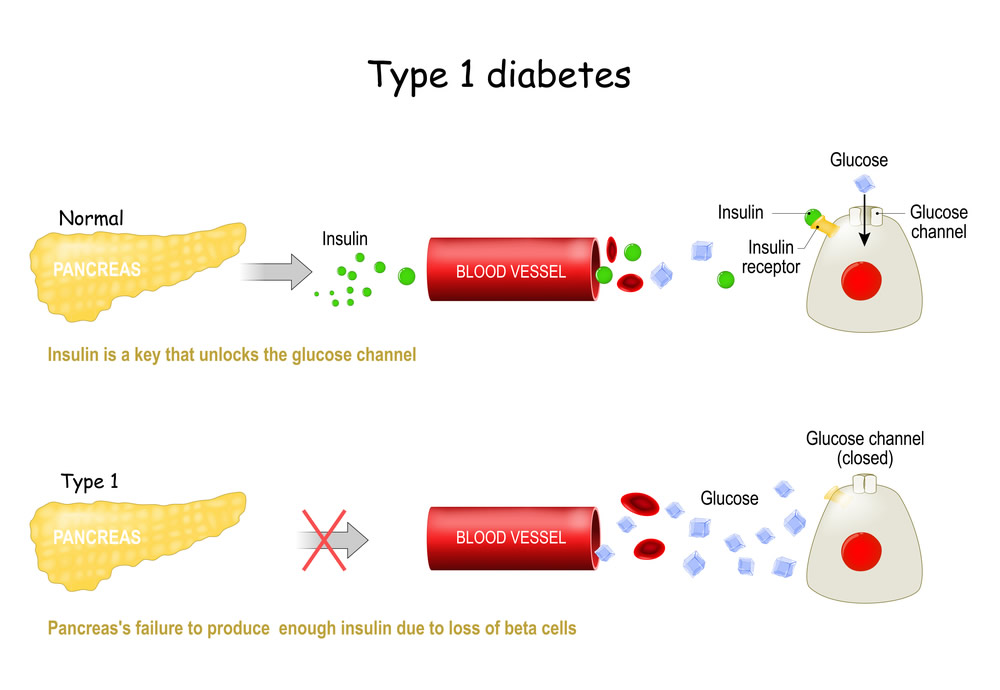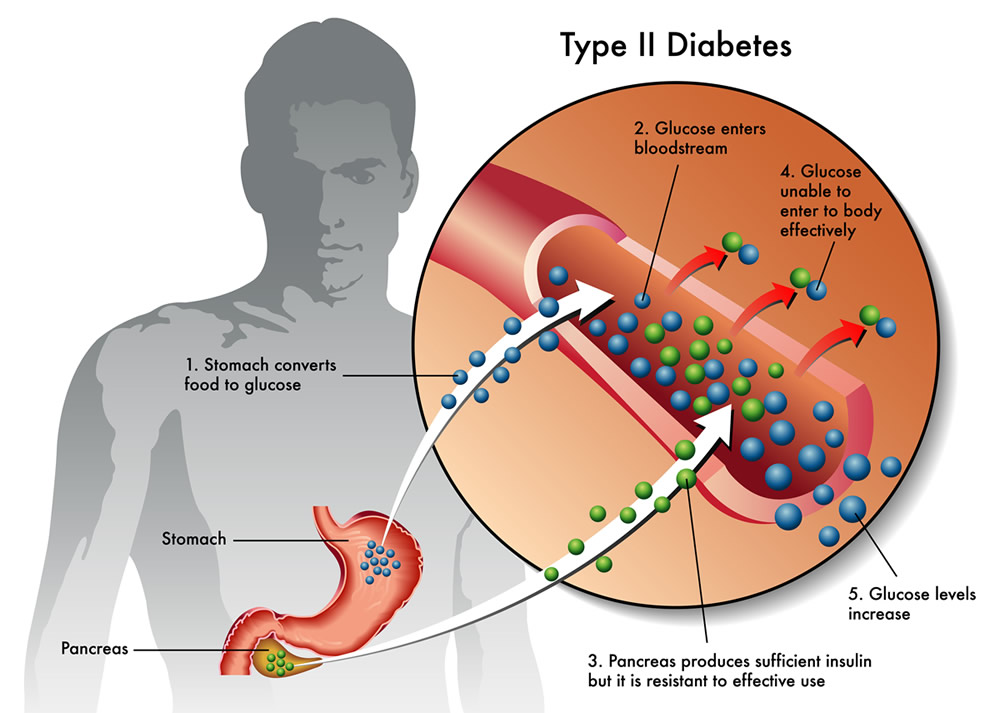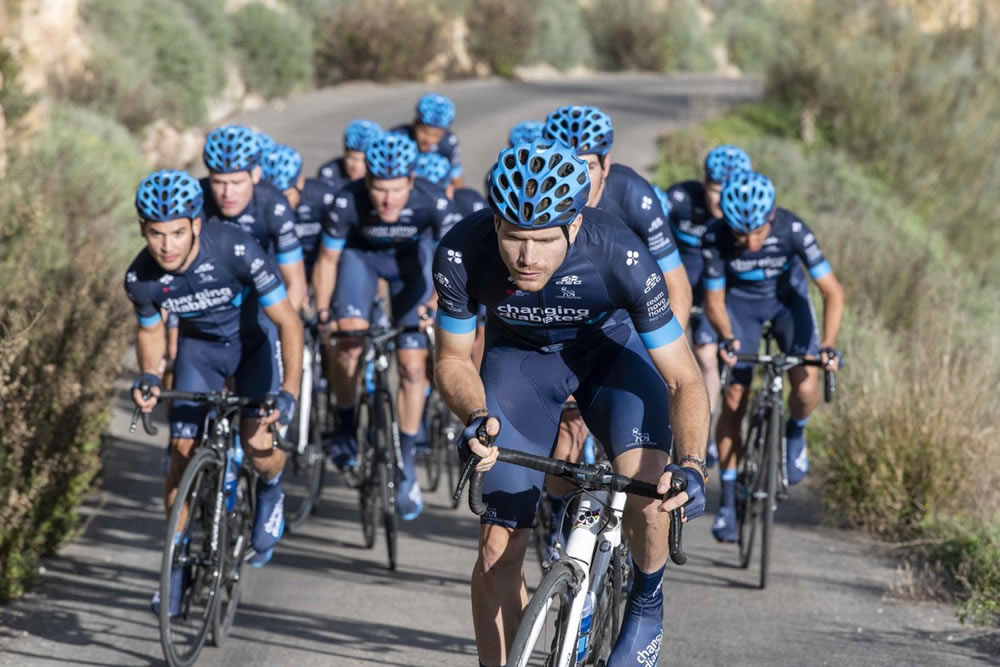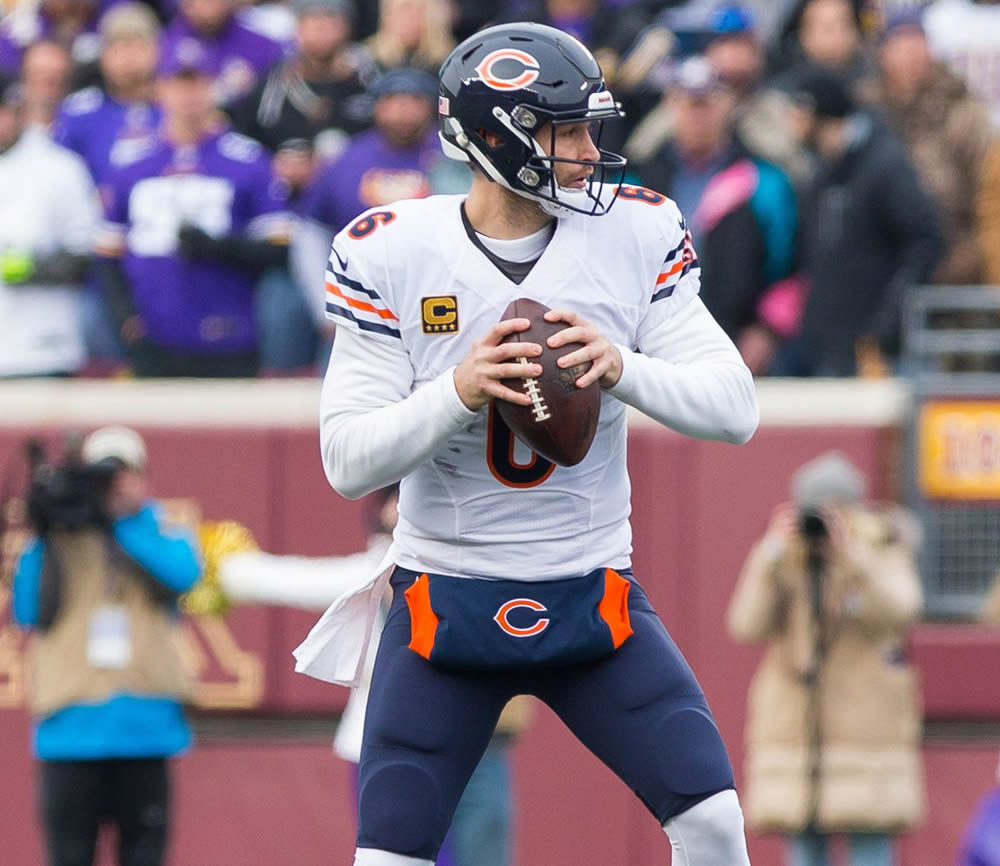Understanding the Basics of Diabetes
Diabetes is a chronic disease that affects your body’s ability to produce or use insulin, a hormone crucial for glucose regulation. Three main types of diabetes exist: Type 1, Type 2, and gestational diabetes. Type 1 diabetes is an autoimmune condition, while Type 2, the most common form, often results from lifestyle factors. Gestational diabetes occurs during pregnancy and typically resolves after delivery.
Impact of Diabetes on Insulin Production and Use
Insulin balances the glucose levels in your bloodstream. When you have diabetes, your body either doesn’t produce enough insulin or doesn’t use it effectively, leading to high blood sugar levels. Over time, this can cause serious complications, including heart disease, kidney damage, and vision loss.


Common Symptoms and Complications of Diabetes
- Increased thirst and frequent urination
- Extreme fatigue
- Blurred vision
- Slow-healing sores
Diabetes can lead to serious health complications if not managed effectively, including heart disease, kidney damage, and nerve damage. Understanding the basics of diabetes is the first step towards effective management and prevention of long-term complications.
Statistics of Diabetes in Athletes: A Closer Look
The notion that athletes are immune to chronic conditions like diabetes is a common misconception. In fact, studies show that athletes are not exempt from this condition. The prevalence of diabetes in athletes might surprise you.
According to the American Diabetes Association, around 34.2 million Americans live with diabetes – that’s more than one in ten people. However, the exact percentage of athletes among these figures is not widely documented, indicating a need for more specific research.
Diabetes Rates in Athletes vs Non-Athletes
When comparing diabetes rates in athletes versus non-athletes, some studies suggest athletes present lower rates of type 2 diabetes due to their active lifestyle. Yet, the risk remains, especially for those engaged in high-intensity sports. This could be linked to the body’s demand for insulin during high-intensity exercise, leading to insulin resistance.
Trends in Diabetes Diagnoses Among Athletes
Over time, there’s been a noticeable increase in diabetes diagnoses among athletes, especially in high-intensity sports. This trend highlights the importance of regular health checks and maintaining a balanced diet alongside rigorous physical activity.
Understanding these statistics and trends is essential for athletes and coaches alike, emphasizing the need for proper nutrition, regular glucose monitoring, and tailored exercise regimes for diabetic athletes.
Impacts of Diabetes on Athletic Performance
Diabetes can significantly impact an athlete’s performance due to the body’s inadequacy to regulate glucose levels. The body’s inability to convert glucose into energy may lead to fatigue, affecting performance. Studies have shown that diabetic athletes may face physical challenges like slower recovery times, increased risk of dehydration, and impaired muscle function.

Challenges Faced by Diabetic Athletes
Diabetic athletes often need to balance their insulin levels meticulously with their dietary intake and exercise to avoid hyperglycemia or hypoglycemia, which may impair their performance. The strain of constant self-management can also lead to psychological stress, further affecting their performance.
Diabetes and an Athlete’s Career
While diabetes can pose challenges, it doesn’t necessarily mean an end to an athlete’s career. With appropriate management strategies, athletes can enjoy successful careers. Yet, it is crucial for diabetic athletes to work closely with healthcare professionals to manage their condition and mitigate potential impacts.
Management Strategies for Diabetic Athletes
For athletes living with diabetes, strategic management of their condition is vital to achieving peak performance. Diabetes requires constant vigilance to avoid hypoglycemia and hyperglycemia. It’s not just about managing insulin; it’s about a comprehensive approach that also factors in nutrition and exercise.
Maintaining Blood Sugar Levels
Keeping blood sugar levels in check is a continuous balancing act for diabetic athletes. Regular monitoring, both before and after training or competition, is key. The Mayo Clinic provides a robust resource on target blood sugar levels and how to maintain them.
Insulin Use, Nutrition, and Exercise
Insulin management must be tailored to each athlete’s needs, taking into consideration the intensity and duration of exercise. Maintaining a balanced diet is crucial, and athletes should consider consulting with a dietitian. The American Diabetes Association’s fitness guide provides comprehensive tips on juggling insulin use, nutrition, and exercise.
Nutrition Guidelines for Diabetic Athletes
The role of diet in managing diabetes is paramount, especially for athletes. Consuming a well-balanced diet not only ensures optimal athletic performance but also helps maintain blood glucose levels within a safe range.
Nutritional Recommendations for Diabetic Athletes
Athletes with diabetes need to pay special attention to their carbohydrate intake, as it significantly impacts blood glucose levels. The American Diabetes Association recommends a diet rich in whole grains, fruits, vegetables, lean proteins, and healthy fats. Regular monitoring of blood glucose levels before and after meals is also crucial to adjust the diet plan as needed.

Meal Planning Tips for Diabetic Athletes
- Maintain a consistent eating schedule to prevent blood glucose fluctuations.
- Monitor carbohydrate intake and adjust insulin doses accordingly.
- Stay hydrated, especially during exercise, to prevent hyperglycemia.
By adhering to these guidelines, diabetic athletes can maintain a balanced diet, manage their diabetes effectively, and excel in their sports performance.
Training Modifications for Diabetic Athletes
For athletes with diabetes, training regimens need to be adjusted to manage blood sugar levels effectively. This involves a combination of careful monitoring, diet adjustments, and possibly modifying the intensity and duration of workouts. Studies have shown that regular exercise can help to regulate blood sugar levels, but it’s crucial to do this safely.
[Image Placeholder: Athlete checking blood sugar level]
Tips for Managing Blood Sugar Levels During Training
Regular blood sugar checks before, during, and after exercise are vital. Consuming a balanced diet and staying hydrated is also important. If necessary, insulin doses may need to be adjusted based on workout intensity. The American Diabetes Association provides comprehensive guidelines on managing diabetes during exercise.
How Professional Diabetic Athletes Adjust Their Training
Many professional athletes with diabetes have found ways to excel in their sports. For instance, Team Novo Nordisk, a professional cycling team composed entirely of athletes with diabetes, has established a successful training routine that includes regular blood glucose monitoring, insulin management, and dietary planning.

The Integral Role of Healthcare Professionals in Supporting Diabetic Athletes
Healthcare professionals, including doctors, dietitians, and other medical staff, play a pivotal role in managing diabetes in athletes. Their expertise aids in ensuring athletes maintain their performance while managing their health condition. Regular medical check-ups are essential to monitor the athlete’s condition and make necessary adjustments to their treatment plan.
Importance of Regular Medical Check-Ups
Regular medical check-ups provide a comprehensive update on the athlete’s health status. This enables healthcare professionals to effectively monitor blood glucose levels, insulin requirements, and the overall health of the athlete. It also allows for the timely detection and management of potential complications.
The Power of Communication
Effective communication between athletes, coaches, and healthcare professionals is fundamental. This triad of communication ensures everyone is informed about the athlete’s health status and any changes in their management plan. It helps to align all parties on the common goal of maintaining the athlete’s health and performance.
Triumph Over Diabetes: Inspiring Athlete Stories
Living with diabetes doesn’t mean forfeiting a life of physical prowess and athletic achievement. Let’s explore case studies of successful athletes who have managed diabetes while competing at a high level.
Consider the story of Justin Morris, a professional cyclist with Type 1 diabetes, competing internationally for Team Novo Nordisk, a global all-diabetes sports team. His journey exemplifies how diabetic athletes can overcome physical and emotional challenges, turning them into triumphs.

We also have Jay Cutler, an NFL quarterback diagnosed with Type 1 diabetes in his prime. Despite his diagnosis, Cutler continued to excel in the NFL for years.

Lessons for Other Diabetic Athletes
These stories provide inspiration and motivation for other diabetic athletes. They teach us that diabetes isn’t a barrier to sports excellence, but a condition that requires careful management.
For further information on managing diabetes as an athlete, refer to the American Diabetes Association’s fitness and wellness resources.
Remember, with determination and the right management, diabetic athletes can reach the pinnacle of their sports. As these inspiring stories prove, diabetes does not define what you can achieve.
If are an athlete, (or just athletic) with diabetes in Austin Texas, talk to us at MedinMotion today to discuss how we can help you maximise your sporting potential.
Diabetes and Athletes FAQs
Yes, an athlete can continue their career after a diabetes diagnosis. With appropriate management strategies, athletes can enjoy successful careers. However, it is crucial for diabetic athletes to work closely with healthcare professionals to manage their condition and mitigate potential impacts.
Yes, athletes can get diabetes. The notion that athletes are immune to chronic conditions like diabetes is a common misconception. In fact, studies show that athletes are not exempt from this condition.
Yes, with determination and the right management, diabetic athletes can reach the pinnacle of their sports. As the inspiring stories of successful athletes with diabetes prove, the condition does not define what one can achieve.
For athletes living with diabetes, strategic management of their condition is vital. This involves regular monitoring of blood sugar levels, maintaining a balanced diet, and adjusting insulin doses based on workout intensity. Regular medical check-ups are also essential.
Healthcare professionals, including doctors, dietitians, and other medical staff, play a pivotal role in managing diabetes in athletes. They provide expertise in monitoring blood glucose levels, insulin requirements, and overall health, and they help make necessary adjustments to treatment plans.
Diabetes can significantly impact an athlete’s performance due to the body’s inability to regulate glucose levels. This can lead to fatigue, slower recovery times, increased risk of dehydration, and impaired muscle function. However, with proper management, athletes can still excel in their sports.
In people with diabetes, the body either doesn’t produce enough insulin or doesn’t use it effectively, leading to high blood sugar levels. Over time, this can cause serious complications, including heart disease, kidney damage, and vision loss.
Effective communication between athletes, coaches, and healthcare professionals is fundamental. This ensures everyone is informed about the athlete’s health status and any changes in their management plan, aligning all parties on the common goal of maintaining the athlete’s health and performance.
The exact prevalence of diabetes in athletes is not widely documented, indicating a need for more specific research. However, studies suggest that athletes are not immune to diabetes, and there has been a noticeable increase in diabetes diagnoses among athletes over time.
Diabetic athletes need to adjust their training regimens to manage blood sugar levels effectively. This involves regular blood sugar checks, diet adjustments, and possibly modifying the intensity and duration of workouts.
Justin Morris, a professional cyclist with Type 1 diabetes, and Jay Cutler, an NFL quarterback diagnosed with Type 1 diabetes, are examples of successful athletes who have managed diabetes while competing at a high level. Their stories provide inspiration and motivation for other diabetic athletes.
Common symptoms of diabetes include increased thirst, frequent urination, extreme fatigue, and blurred vision. If not managed effectively, diabetes can lead to serious health complications like heart disease, kidney damage, and nerve damage.
Diabetes is a chronic disease that affects the body’s ability to produce or use insulin, a hormone crucial for glucose regulation. There are three main types: Type 1, Type 2, and gestational diabetes. Each type has different causes and may require different management strategies.
Nutrition plays a paramount role in managing diabetes in athletes. A well-balanced diet not only ensures optimal athletic performance but also helps maintain blood glucose levels within a safe range. Special attention should be paid to carbohydrate intake.
Regular medical check-ups provide a comprehensive update on the athlete’s health status. This enables healthcare professionals to effectively monitor blood glucose levels, insulin requirements, and the overall health of the athlete, allowing for timely detection and management of potential complications.

Dr. Martha Pyron is a recognized sports medicine physician and the founder of Medicine in Motion, an Austin-based practice specializing in comprehensive medical care for active individuals and athletes. An active contributor to her field, she uses her extensive experience as a former collegiate athlete to aid her patients and develop innovative care strategies. Beyond her clinical practice, Dr. Pyron is known for her involvement in the local athletic community and her commitment to promoting health and fitness.




